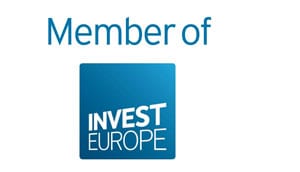Startup Pitch Deck – What NOT to include in the competition slide

This article is part of a series dissecting the startup pitch deck slide by slide, in no particular order. The intent is to help founders create brief, relevant, and well-structured presentations for their ventures.
The competition slide is a key component of any startup deck. Surprisingly, this slide actually tells us more about the startup itself, rather than the competition.
Here’s why: it reveals how founders think in terms of market opportunities, competitive advantage, and business defensibility. It is a good measure of their business maturity and strategic thinking, all condensed in one slide.
I’ve seen many competition slides that look all alike and tell me nothing of value. As a tech founder, you have to make sure you craft the right message. Find below two examples of how NOT to structure the competition slide and one way of how to do it.
What you shouldn’t talk about in your startup pitch deck competition slide
1. Don’t think in terms of “Features we have but they don’t”
The uninspired way to structure this slide is as a table presenting the leading competitors and what they presume to be their competitive advantage, which is mostly the features that their products lack compared with your startup’s product.
Presenting the problem in terms of “features we have but they don’t” is childish, yet so regular among founders. Childish because it reduces companies to products, or even worse, to product features taken independently.
This way of thinking assumes that:
- the sum of features equates the product,
- the more features, the better the product, and
- adding features is a sustainable strategy to differentiate from the competition.
This is all terribly wrong. Here are some examples:
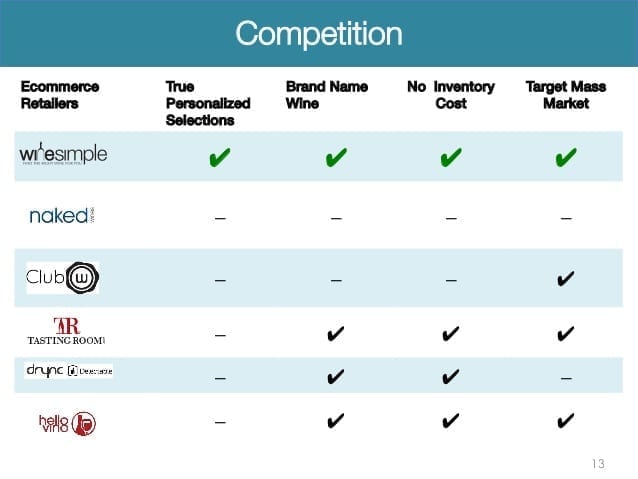
Example 1 – Source

Example 2 – Source
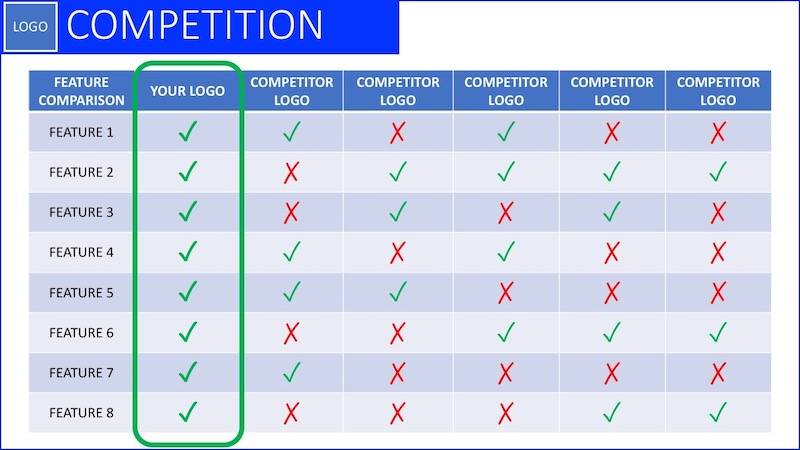
Example 3 – Source
2. Don’t come up with any irrelevant axis
Another wrong way to map the competition is by employing irrelevant OX-OY axis.
Founders organize the universe based on imagined forces that govern the competitive landscape, in a blatant attempt to show that their startup found an excellent positioning no one else has claimed so far and never will.
Because no one else has ever thought in terms of “local-global,” “online-offline,” “high price-low price,” and never will (!!??). Here are some examples:
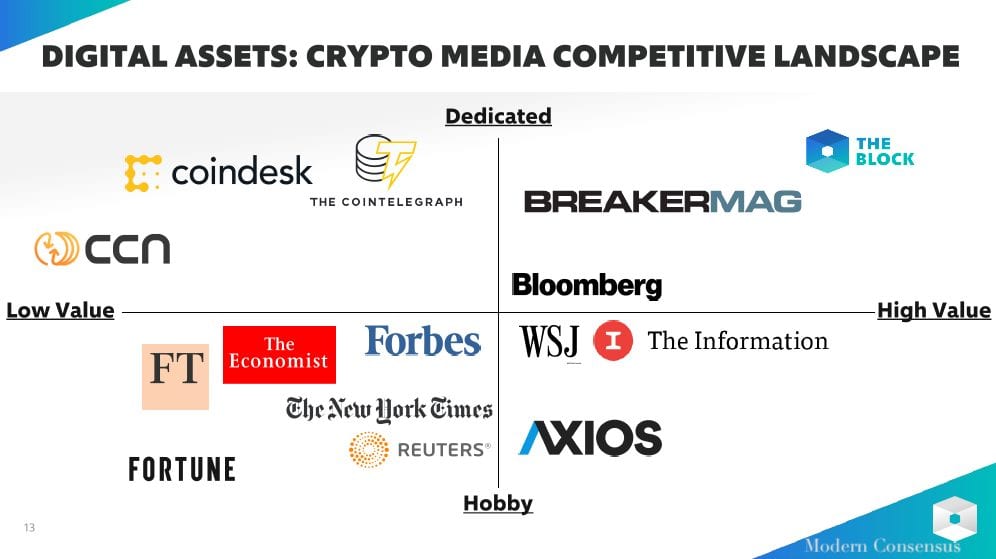
Example 1 – Source

Example 2 – Source
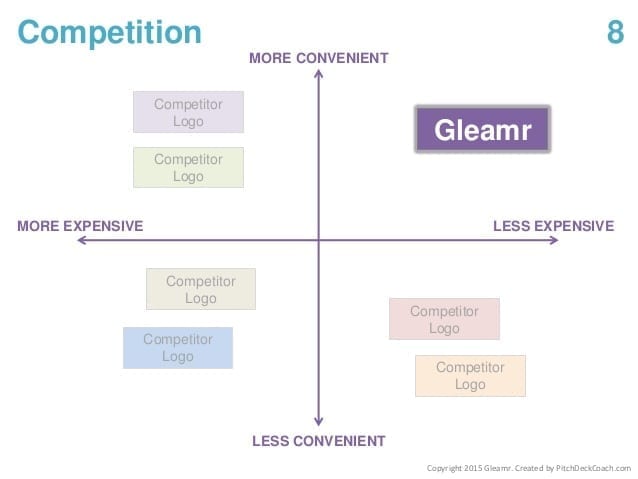
Example 3 – Source
Though a bit more strategic than their features-listing brothers in arms, founders who use the axis mapping should put their minds at work to identify the relevant forces that govern their industry.
The axis should illustrate massive trends, the resulting map should be based on industry insights, the overall image should convey a vision of where the industry is heading and the importance of that magical space the startup identified and aims at. Failing to do so shows founders’ lack of sound industry knowledge as well as their talent for badly using a good mind tool.
What do investors look for in a startup pitch deck competition slide?
Investors need confirmation that founders know their stuff. The Competition slide should prove that founders are self-aware, mindful of what sets them apart from the rest of the crowd, intimate with the trends, and aiming at a strategic position within their industry. It should prove vision — and you can’t fake vision.
After reading the Competition slide, investors should be compelled to engage with the founders and should feel the fear of missing out. They must be sold on that vision and believe that this team has a real chance to become a key player in the so clearly laid-out market.
Think you’ve got what it takes? Drop us a line and your deck here.

